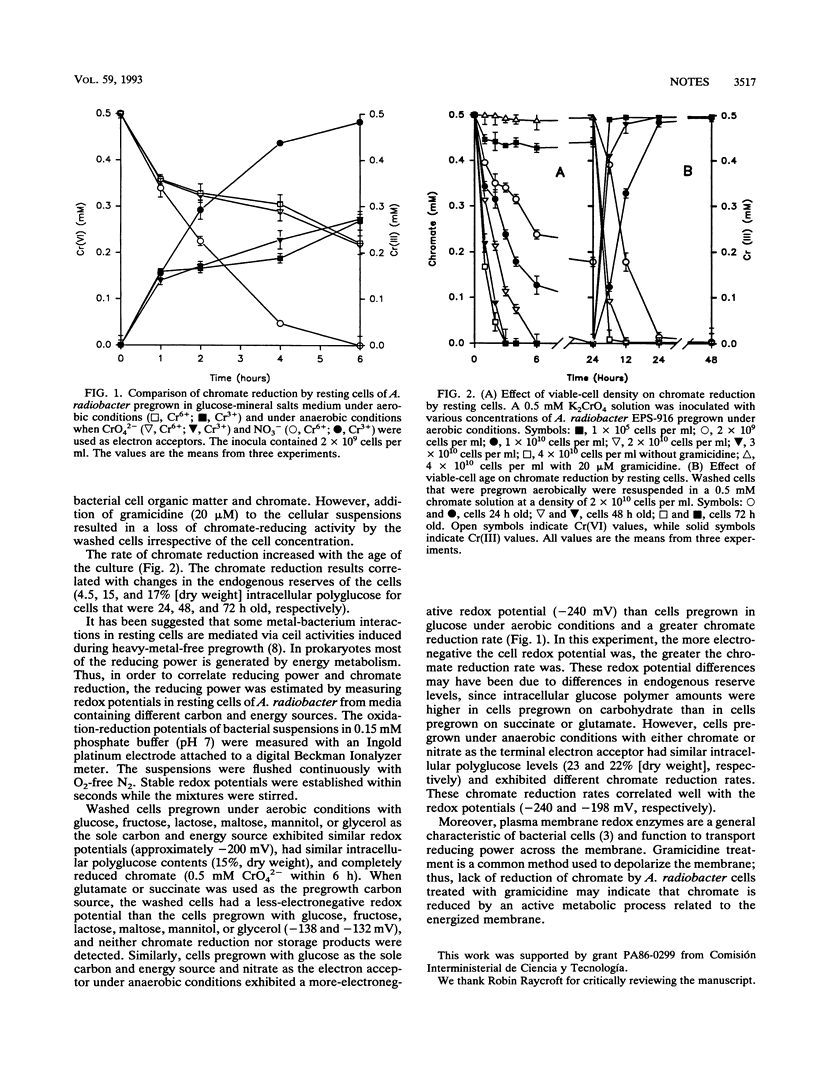Abstract
Resting cells of Agrobacterium radiobacter EPS-916 grown on glucose, fructose, maltose, lactose, mannitol, or glycerol reduced 0.5 mM chromate. However, resting cells of strain EPS-916 grown on glutamate or succinate did not reduce chromate. The ability of washed cells to reduce chromate was correlated with their redox potential.
Full text
PDF


Selected References
These references are in PubMed. This may not be the complete list of references from this article.
- Goldenberg H. Plasma membrane redox activities. Biochim Biophys Acta. 1982 Oct 20;694(2):203–223. doi: 10.1016/0304-4157(82)90025-9. [DOI] [PubMed] [Google Scholar]
- Linton J. D., Cripps R. E. The occurrence and identification of intracellular polyglucose storage granules in Methylococcus NCIB 11083 grown in chemostat culture on methane. Arch Microbiol. 1978 Apr 27;117(1):41–48. doi: 10.1007/BF00689349. [DOI] [PubMed] [Google Scholar]
- Petrilli F. L., De Flora S. Toxicity and mutagenicity of hexavalent chromium on Salmonella typhimurium. Appl Environ Microbiol. 1977 Apr;33(4):805–809. doi: 10.1128/aem.33.4.805-809.1977. [DOI] [PMC free article] [PubMed] [Google Scholar]
- Suzuki Y., Serita F. Simultaneous determination of water-soluble trivalent and hexavalent chromium by anion exchange high-pressure liquid chromatography. Ind Health. 1985;23(3):207–220. doi: 10.2486/indhealth.23.207. [DOI] [PubMed] [Google Scholar]
- Venitt S., Levy L. S. Mutagenicity of chromates in bacteria and its relevance to chromate carcinogenesis. Nature. 1974 Aug 9;250(5466):493–495. doi: 10.1038/250493a0. [DOI] [PubMed] [Google Scholar]


